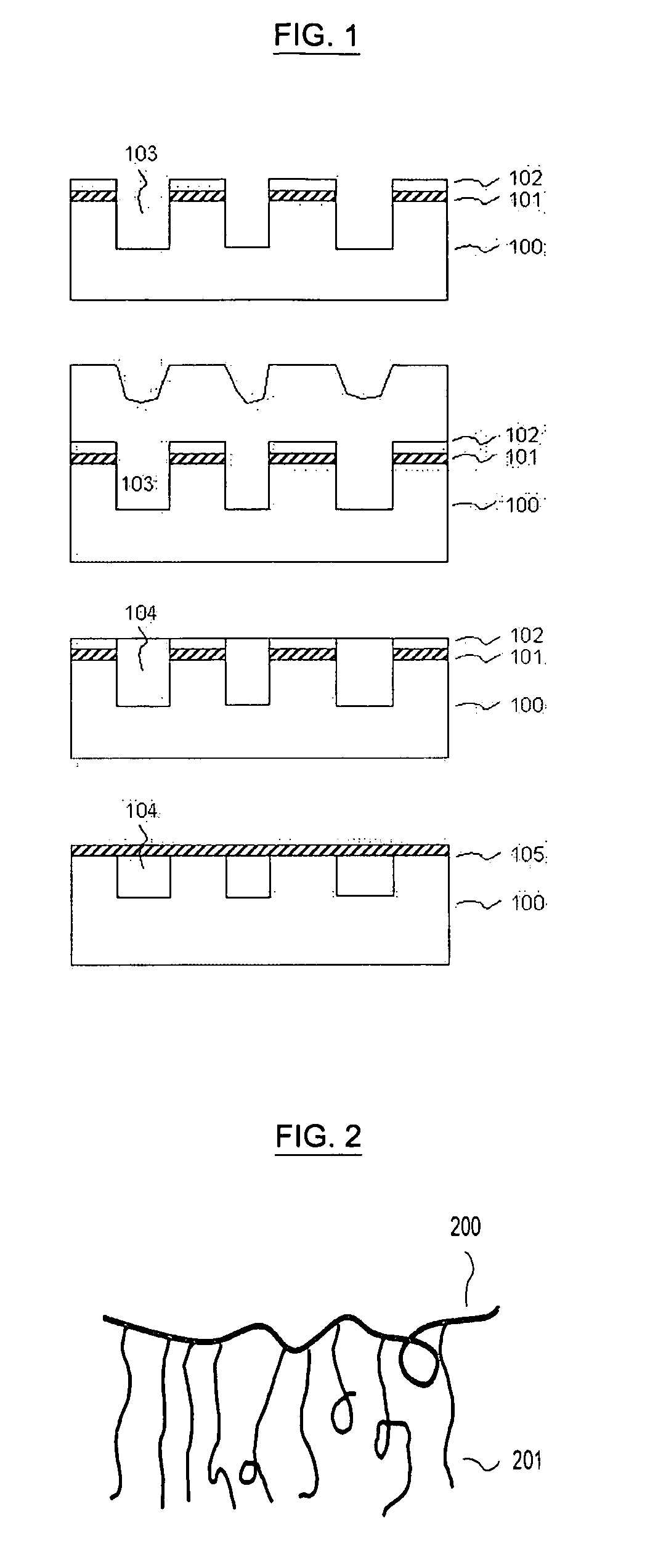Adjuvant for controlling polishing selectivity and chemical mechanical polishing slurry comprising the same
- Summary
- Abstract
- Description
- Claims
- Application Information
AI Technical Summary
Benefits of technology
Problems solved by technology
Method used
Image
Examples
preparation example 1
Preparation of Linear Polyelectrolyte
[0067] To a 2L glass reactor equipped with a thermometer, a stirrer, a dropping funnel, a nitrogen inlet tube and a reflux condenser, 160 parts by weight of distilled water and 240 parts by weight of isopropyl alcohol were introduced, the reactor was purged with nitrogen under stirring, and the reaction mixture was heated to 80° C. under nitrogen atmosphere.
[0068] To the reactor, an aqueous monomer solution containing 300 parts by weight of acrylic acid mixed with 250 parts by weight of distilled water and 90 parts by weight of an aqueous solution containing 9.7 wt % of ammonium peroxide as an initiator were added dropwise over 3 hours. After the completion of the addition, the reaction mixture was aged while maintaining the temperature at 80° C. for 2 hours to complete the polymerization.
[0069] After the polymerization, isopropyl alcohol and distilled water were extracted from the reaction mixture while increasing the pressure gradually from ...
preparation example 2
Preparation of Graft Type Polyelectrolyte
[0071] An acrylic acid-methoxypolyethylene glycol monomethacrylate graft type polyelectrolyte was prepared in the same manner as described in Preparation Example 1, except that the aqueous monomer solution was comprised of 210 parts by weight of acrylic acid and 90 parts by weight of methoxypolyethylene glycol monomethacrylate (average addition mole number of ethylene oxide groups: 6 moles), instead of 300 parts by weight of acrylic acid.
[0072] The graft type polyelectrolyte had a weight average molecular weight of 17,896.
example 1
[0073] (Preparation of Adjuvant for CMP Slurry)
[0074] First, 100 parts by weight of the linear polyelectrolyte obtained from Preparation Example 1 was mixed with 0 parts by weight of the graft type polyelectrolyte obtained from Preparation Example 2, and the mixture was diluted with water to a concentration of 3 wt %. Then, ammonium hydroxide as a basic material was added to the solution of polyelectrolytes to a pH 7.0˜8.0 to provide an adjuvant for CMP slurry.
[0075] (CMP Slurry)
[0076] CMP slurry was prepared by mixing the adjuvant for CMP slurry obtained as described above, abrasive particle composition and water in a volume ratio of 1:3:3. Then, pH of the slurry was adjusted to about pH 7.5˜8.0.
PUM
| Property | Measurement | Unit |
|---|---|---|
| Percent by mass | aaaaa | aaaaa |
| Fraction | aaaaa | aaaaa |
| Fraction | aaaaa | aaaaa |
Abstract
Description
Claims
Application Information
 Login to View More
Login to View More - R&D
- Intellectual Property
- Life Sciences
- Materials
- Tech Scout
- Unparalleled Data Quality
- Higher Quality Content
- 60% Fewer Hallucinations
Browse by: Latest US Patents, China's latest patents, Technical Efficacy Thesaurus, Application Domain, Technology Topic, Popular Technical Reports.
© 2025 PatSnap. All rights reserved.Legal|Privacy policy|Modern Slavery Act Transparency Statement|Sitemap|About US| Contact US: help@patsnap.com



